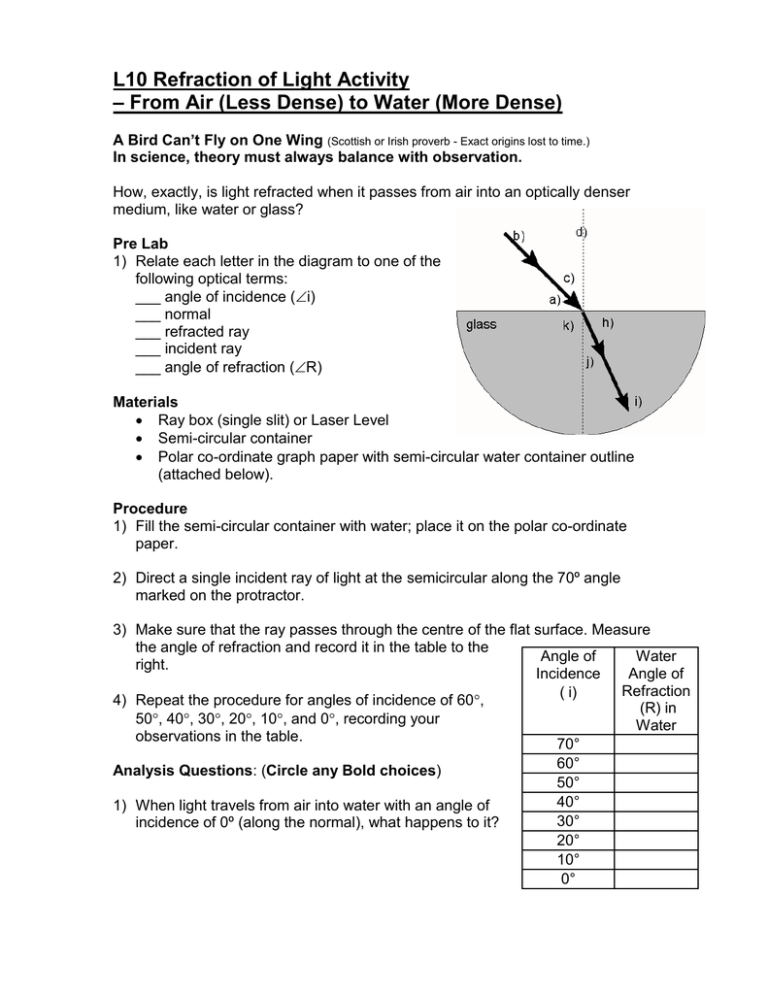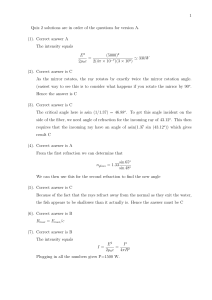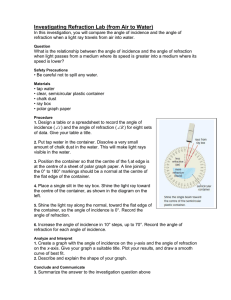L10 Refraction of Light Activity
advertisement

L10 Refraction of Light Activity – From Air (Less Dense) to Water (More Dense) A Bird Can’t Fly on One Wing (Scottish or Irish proverb - Exact origins lost to time.) In science, theory must always balance with observation. How, exactly, is light refracted when it passes from air into an optically denser medium, like water or glass? Pre Lab 1) Relate each letter in the diagram to one of the following optical terms: ___ angle of incidence (i) ___ normal ___ refracted ray ___ incident ray ___ angle of refraction (R) Materials Ray box (single slit) or Laser Level Semi-circular container Polar co-ordinate graph paper with semi-circular water container outline (attached below). Procedure 1) Fill the semi-circular container with water; place it on the polar co-ordinate paper. 2) Direct a single incident ray of light at the semicircular along the 70º angle marked on the protractor. 3) Make sure that the ray passes through the centre of the flat surface. Measure the angle of refraction and record it in the table to the Angle of Water right. Incidence Angle of Refraction (i) 4) Repeat the procedure for angles of incidence of 60, (R) in 50, 40, 30, 20, 10, and 0, recording your Water observations in the table. 70° 60° Analysis Questions: (Circle any Bold choices) 50° 40° 1) When light travels from air into water with an angle of 30° incidence of 0º (along the normal), what happens to it? 20° 10° 0° 2) When light travels from air to water at an angle of incidence greater than 0º, it is bent (away from / towards) the normal. 3) When light travels from air into glass, as the angle of incidence (i) gets smaller, the angle of refraction (R) a) gets greater, b) becomes equal, c) gets smaller. 4) The incident and refracted rays are always on the (same side / opposite side) of the normal. 5) The angle of refraction (R) is always a) greater than the angle of incidencei), b) less than the angle of incidence i), c) equal to the angle of incidence (i). 6) Draw the refracted ray. 7) What’s wrong with these diagrams? Draw in the correct refracted ray. 8) Draw the rays as they refract into the glass.





